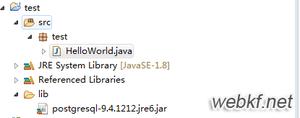PostgreSQL源码学习执行器#9

本节介绍ExecutePlan函数
相关数据结构
typedef enum ScanDirection{
BackwardScanDirection = -1,
NoMovementScanDirection = 0,
ForwardScanDirection = 1
} ScanDirection;
ExecutePlan函数
static voidExecutePlan(EState *estate,
PlanState *planstate,
bool use_parallel_mode,
CmdType operation,
bool sendTuples,
uint64 numberTuples,
ScanDirection direction,
DestReceiver *dest,
bool execute_once);
执行查询计划,直到获取到numberTuples个元组,并且处理时朝direction方向移动。
//src/backend/executor/execMain.c/* 初始化本地变量 */
current_tuple_count = 0;
/* 设置扫描移动方向 */
estate->es_direction = direction;
/* 如果计划可能被多次执行,那么它不可以并行执行,因为处理可能提前退出 */
if (!execute_once)
use_parallel_mode = false;
estate->es_use_parallel_mode = use_parallel_mode;
if (use_parallel_mode)
EnterParallelMode();
/* 循环,直到我们从计划中处理了适当数量的元组。*/
for (;;)
{
/* 重置每个输出元组的expr上下文 */
ResetPerTupleExprContext(estate);
/* 执行计划并获取一个元组 */
slot = ExecProcNode(planstate);
/* 如果没有元组了,那么假定就是执行完成了,所以跳出循环 */
if (TupIsNull(slot))
{
/* 如果不需要倒退那直接在这里释放资源就行 */
if (!(estate->es_top_eflags & EXEC_FLAG_BACKWARD))
(void) ExecShutdownNode(planstate);
break;
}
/* 有需要的话,对元组进行“垃圾属性”过滤“ */
if (estate->es_junkFilter != NULL)
slot = ExecFilterJunk(estate->es_junkFilter, slot);
/* 有需要的话,发送元组到某处 */
if (sendTuples)
{
/* 若发送失败,那么假定是目标被关闭了,所以结束循环 */
if (!dest->receiveSlot(slot, dest))
break;
}
/* 如果是SELECT操作,统计处理的元组数量 */
if (operation == CMD_SELECT)
(estate->es_processed)++;
/* 检查处理的元组数量,如果已经够了,那么退出。
* 如果numberTuples是0的话,表示没有限制 */
current_tuple_count++;
if (numberTuples && numberTuples == current_tuple_count)
{
/* 如果不需要倒退那直接在这里释放资源就行 */
if (!(estate->es_top_eflags & EXEC_FLAG_BACKWARD))
(void) ExecShutdownNode(planstate);
break;
}
}
if (use_parallel_mode)
ExitParallelMode();
以上是 PostgreSQL源码学习执行器#9 的全部内容, 来源链接: utcz.com/z/534159.html








